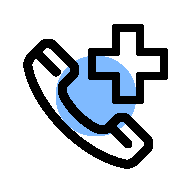(BTE) hearing aids
(BTE) hearing aids There are different types of hearing aids on the market these days and vary in their sizes and features using the latest technology to improve external sounds, reduce background noise and introduce new features such as Bluetooth, but traditional behind-the-ear (BTE) hearing aids are very popular Rich in Features Below you will discover what BTE hearing aids are, how they differ from other common types, along with some excellent advantages of choosing one for your hearing loss and operazi offers its customers a hearing aid installment service.
What does (BTE) hearing aids mean?
- The BTE hearing aid has an earpiece molded to the shape of the inner ear canal.
- This earphone is attached to a small circuit in a plastic casing and there are some tubes connecting the two parts.
- This is a popular type of hearing aid with many advantages over smaller devices.
- The larger case houses a battery which means the device can last for longer periods of time with repairs or maintenance, and also allows for more features to be included.
How do (BTE) hearing aids work?
- Although the (BTE) hearing aids are more noticeable than the in-ear model (ITE), it is still not reasonably noticeable when selected with skin or hair tones.
- The large housing behind the ear contains the electronic circuitry needed for amplification and microphone.
- This casing containing the electronics is connected to the ear mold via some tubes; Circuits in the casing pick up sound from the environment and send it as an amplifier to the earpiece.
- Sound travels from the earphone housing to the ear mold and inner ear.
Read also: Cytoplasmic transfer
What makes (BTE) hearing aids different?
- BTE hearing aids contain the audio receiver located in the housing of the device.
- This is in contrast to other types of hearing aids such as the ITE or ITC types.
- But while they may not be as separate or convenient as alternative styles, BTE hearing aids have many advantages.
- The biggest advantage of (BTE) hearing aids is their size - they may not be separate, but their size is important for something.
- The larger chassis fits a larger battery and more internal electronic devices such as better microphone, bluetooth, communication and these devices are also easier to install and repair.
Why choose a BTE device?
- Choosing the right hearing aid is critical to ensuring that you get the most value for your money.
- Your hearing is so important, and even a small improvement can make a big difference to your quality of life.
- BTE behind-the-ear hearing aids are an excellent choice for anyone with hearing difficulties or tinnitus.
- The device is suitable for a wide range of lifestyles and hearing loss situations; They are also very well sized to fit in their maintenance and repair.
- If this is your first hearing device or you need something practical, a BTE is recommended.
- You should discuss your options with your audiologist to make sure that you install the device that is right for you.
- BTE behind-the-ear headphones offer long life and easy maintenance, along with a host of additional features you won't find in smaller devices.
- Talk to your audiologist about your options before making any final decisions.
Pros of (BTE) hearing aids
There are a number of different styles of hearing aids to choose from, but the behind-the-ear (BTE) device is one of the most popular because it fits most types of people. However, there are still a number of pros and cons that you should consider before making your final decision. Positives:
- Suitable for any degree of hearing loss.
- The main reason why so many people choose this type of hearing aid is that no matter how deep your hearing loss is, it's likely to be right for you.
- Suitable for children.
- The BTE hearing aid is easy to wear, making it ideal for children with mild to severe hearing loss.
- Because hearing aids are easy to handle, older teens should be able to change batteries themselves when they need to.
- Since the microphone and receiver are far from this model, there are usually fewer feedback and this makes hearing aids more comfortable for the wearer and less likely to use.
- Less likely to require repairs.
- Because BTE behind-the-ear headphones are a bit bulkier, they also tend to be more resistant to abrasion and less likely to need repairs. This is ideal for people who need hearing aids, but are worried about breaking a more sensitive model.
- Easier to clean.
- Although most BTEs have more components than other styles, they are easy to clean and maintain, take care of the pipes and be sure to use a dry cloth or brush for best results.
- Comfortable: Because it doesn't sit deep inside the ear canal, some users find it more comfortable.
- Bluetooth connectivity They can connect wirelessly to smart devices using Bluetooth.
- Suitable for severe hearing loss: It can meet more severe levels of hearing loss than some other types of hearing aids.
- Longer battery life: They include larger batteries, allowing for a longer battery life.
See also: Embryo transfer
Disadvantages of (BTE) hearing aids
1- The headphones are clearer
- The main reason some people prefer other models is that the BTE hearing aid is worn outside your ear, making it easier to see.
- This type of hearing aid also comes in a wide range of colors so you can find something that matches your skin tone and choose something a little more appropriate.
- However, many audiologists offer smaller versions of the BTE, to better suit everyone's preferences.
2- More maintenance is required
- Like all hearing aids, some maintenance will be required to ensure that the aids continue to function optimally for you.
- If you have an ear mold, you will need to take new ones every two years to make sure the fit is spot on.
- You will also need to replace the tubes every now and then.
- They are more likely to pick up wind noise: Placing them behind the ear means these devices are more likely to pick up wind noise, but modern technology offers solutions to this problem.
- Talking about the pros and cons of each type of hearing aid with an audiologist is the best way to choose the right one for you.








00 التعليقات